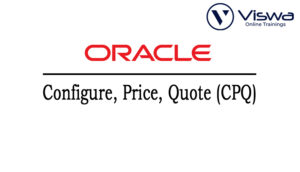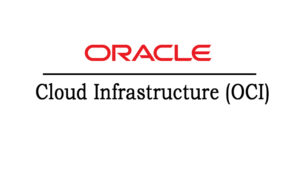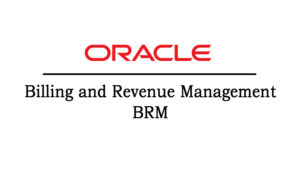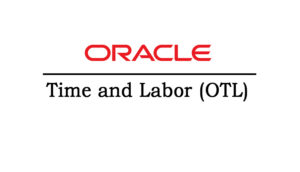SAP BTP (Business Technology Platform) Certification Training
One of the top providers of online IT training worldwide is VISWA Online Trainings. To assist beginners and working professionals in achieving their career objectives and taking advantage of our best services, We provide a wide range of courses and online training.
Learners : 1080
Duration : 30 Days
About Course
You can develop multilingual cloud apps in Cloud Foundry using our SAP BTP (Business Technology Platform) environment. It includes the Cloud Foundry runtime service for the SAP Cloud Platform, which is based on the open-source application platform provided by the Cloud Foundry Foundation. You can create new business apps and services using the Cloud Foundry environment, which supports a variety of runtimes, programming languages, libraries, and services. To become certified, enrol right away.
SAP BTP Training Course Syllabus
✔ Define Cloud Computing
✔ Why Cloud Computing?
✔ Different Kinds of Cloud Computing Service Models?
✔ Introduction to SAP BTP
✔ Introduction to SAP Cloud Foundry
✔ Introduction to SAP Kyma
✔ The functionality of SAP Kyma
✔ Introduction to SAP BTP Account
✔ Create a Free Trial Account in SAP BTP Account
✔ What is Global Account, Space, and Subaccount
✔ SAP BTP Account Structure – Global Account Associations and Functionalities
✔ SAP BTP Account Structure – Space, SubAccount, Region, and Members Functionalities and Associations
✔ Creating the New SubAccount, What are Unit and Quota
✔ Different Service Types, Enabling Creating Space and Cloud Foundry
✔ Using SAP BTP Account Structure in Organizations
✔ Installing Cloud Foundry CLI from the installer file
✔ Cloud Foundry CLI Commands: Version, MarketPlace, and Login
✔ Cloud Foundry CLI Commands: List all Apps, Start and Stop Apps, Buildpacks
✔ Cloud Foundry CLI Commands: Scale Down and Scale Up Apps
✔ Cloud Foundry CLI Pointers for more commands
✔ Creating Manifest.YAML file
✔ Introduction to SAP@ Cloud MTA Builder Tool
✔ Creating the MTA.YAML file with the Simple Custom Task
✔ Developing the App with the Cloud MTA Builder and Deploying the APP to SAP Cloud Foundry
✔ Enabling SAP Kyma Environment in SAP BTP
✔ Adding the Developer and Admin Rules to your users and starting the Kyma Dashboard
✔ Functions and Pods, Creating the Hello World Service and Expose through API
✔ Event, Context, and Checking Values in Logs
✔ Application and Service Binding
✔ Creating the Instance of PostgreSQL Service in SAP BTP
✔ Application and DB Service Binding
✔ Service Key of the Service Instance and Utilization @sap/xsenv
✔ Creating the New Service Key from the CLI and utilizing it in the default-env.json for the local testing
✔ Adding template code of DB connection and VCAP Environment Variable
✔ Extracting the VCAP variables from the default-env.json through require() and utilizing it in the DB connection
✔ Pushing the App to the cloud for replacing and testing require() with @sap/xsenv
✔ Using the xsenv’s getservice() for filtering by tag and load service credentials in the VCAP variables
✔ Pushing Applications to SAP BTP, facing errors, fixing code with the Service Binding, and adding TAG to the service.
✔ Getting the DB connection successful, seeing the VCAP variables of the application
✔ Putting Express-Based API Code for completing and deploying the application to SAP BTP
✔ Fixing the EJS Error and Pushing the App again to SAP BTP
✔ Testing the App Features and APIs in SAP BTP
✔ Application and on-site connection
✔ Link for Creating API in the S4 on-site system
✔ Three ways for creating application connection for the Data
✔ Setup connection to the Eclipse from the SAP On-Site
✔ Creating Data-loader class for on-site system
✔ Creating CDS View for Exposing the Data as the oData APIs
✔ Revealing the oData APIs of the CDS View through Service Maintenance
✔ Building GetData Module for the Axios call to the on-site system
✔ Integrating the Data with the Front-end applications and Testing the Application
✔ Fixing the Errors and Deploying the Applications to the SAP Cloud Foundry
✔ Adding VCAP services entry of the XSUAA Services in the default-env.json
✔ Adding the VCAP_Services entry of the destination Service in the default-env.json
✔ Adding the Destination of our on-site System in our SAP BTP
✔ Developing the code for invoking XSUAA Service for providing us the Accen token
✔ Using the XSAA token for calling the destination service for acquiring the destination details and facing the error
✔ Fixing the code of the XSUAA Token Generation, Completing the App Development and Testing
✔ Deploying the App to SAP BTP and Testing the App
✔ Launching Cloud Connector in S4 HANA System
✔ Setting Connection from SAP BTP and SAP Cloud Connector
✔ SAP Cloud to on-site Mapping and Revealing Services through Cloud Connector
✔ Creating a Destination in the SAP BTP to reach the SAP on-site System through Cloud Connector
✔ Creating the Service Key for the Connectivity Service in the SAP BTP
✔ Developing the Code for acquiring the Token from the Connectivity Service
✔ Developing the Code for Invoking Cloud Connector Service with the Basic Authentication and Bearer Token
✔ Fixing the Issue, Getting the Connection Details, and Facing the Timeout Error
✔ Fixing the Virtual Host Pattern and Deploying and Testing the Final App
| Live Instructor Based Training With Software |
| Lifetime access and 24×7 support |
| Certification Oriented content |
| Hands-On complete Real-time training |
| Get a certificate on course completion |
| Flexible Schedules |
| Live Recorded Videos Access |
| Study Material Provided |
SAP BTP Training - Upcoming Batches
Coming Soon
8 AM IST
Coming Soon
AM IST
Coming Soon
8 PM IST
Coming Soon
PM IST
Don't find suitable time ?
CHOOSE YOUR OWN COMFORTABLE LEARNING EXPERIENCE
Live Virtual Training
-
Schedule your sessions at your comfortable timings.
-
Instructor-led training, Real-time projects
-
Certification Guidance.
Self-Paced Learning
-
Complete set of live-online training sessions recorded videos.
-
Learn technology at your own pace.
-
Get access for lifetime.
Corporate Training
-
Learn As A Full Day Schedule With Discussions, Exercises,
-
Practical Use Cases
-
Design Your Own Syllabus Based
SAP BTP Training FAQ'S
A cloud-based platform called SAP Business Technology Platform aids companies in managing their operations more successfully. To handle corporate operations, data, and applications, the platform offers a range of tools and services. The platform is made to be versatile and expandable so that companies of various sizes can use it.
By offering a uniform set of tools and services that can be used across the entire platform, the various layers of SAP BTP’s architecture cooperate to build a single development and deployment environment for developers. This includes the SAP HANA Cloud, SAP Ariba Cloud, and SAP SuccessFactors Cloud, as well as the SAP Cloud Platform, which serves as the framework for SAP BTP.
Scalability, adaptability, and user-friendliness are three of the SAP Cloud Foundry environment’s key characteristics. In addition to being incredibly flexible in terms of the kinds of applications that may be put on it, Cloud Foundry is made to be a platform that can quickly scale up or down as needed. Furthermore, Cloud Foundry makes it simple to start creating and deploying apps, making it a fantastic option for companies who want to launch cloud-based services quickly.
By learning through VISWA Online Trainings, advance in your job.
By creating a project, including the required files and dependencies, constructing the application, and then deploying it, a developer can create business apps using SAP Business Application Studio.
By offering a platform that can connect to different data sources and then aggregate the data into a single view, SAP Data Warehouse Cloud aids in the integration of data from several sources into a single repository. When you need to aggregate data from various sources for analysis or reporting needs, this can be useful.
Reviews
 Vishnu Gadipudi2023-08-20I Enrolled in VISWA Online Trainings for IBM Integration BUS course . Recently I Completed IBM Integration BUS Batch. It was Really Awesome Experience. Best Place To Learn , Experienced Trainer, Gives Us High Level Knowledge....
Vishnu Gadipudi2023-08-20I Enrolled in VISWA Online Trainings for IBM Integration BUS course . Recently I Completed IBM Integration BUS Batch. It was Really Awesome Experience. Best Place To Learn , Experienced Trainer, Gives Us High Level Knowledge.... Navya Biradavolu2023-08-20I was enrolled for looker Bl Tool,it was amazing experience . especially soft skill batch is one of my favourite batch . overall learning process is quite impressive.
Navya Biradavolu2023-08-20I was enrolled for looker Bl Tool,it was amazing experience . especially soft skill batch is one of my favourite batch . overall learning process is quite impressive. Indla sneha2023-08-20I have joined I have joined VISWA Online TRAININGS for Java full stack course and i have completed Advance Java module. I had a good knowledge of Hibernate, spring,spring boot,spring MVC. Tutor has knowledge in depth and is supportive. Srinadh sir solved all our doubts....
Indla sneha2023-08-20I have joined I have joined VISWA Online TRAININGS for Java full stack course and i have completed Advance Java module. I had a good knowledge of Hibernate, spring,spring boot,spring MVC. Tutor has knowledge in depth and is supportive. Srinadh sir solved all our doubts.... bindu hima2023-08-20I am recently completed Talend course and trainer is Rajendra very professional and helpful. All the doubts were solved in a precise manner.
bindu hima2023-08-20I am recently completed Talend course and trainer is Rajendra very professional and helpful. All the doubts were solved in a precise manner. Tarunasree Gowra2023-08-20"I truly enjoyed this course." Chaitanya sir fantastic-very knowledgeable. Sir give us very informative and clear instruction on how to achieve the goal. Thank you!
Tarunasree Gowra2023-08-20"I truly enjoyed this course." Chaitanya sir fantastic-very knowledgeable. Sir give us very informative and clear instruction on how to achieve the goal. Thank you! Tejaswini Kommu2023-08-20Overall Linux Admin sessions batch was very good. Mr. RAM Krishna teaching was very helpful to remind our basic concepts in linux & networking.
Tejaswini Kommu2023-08-20Overall Linux Admin sessions batch was very good. Mr. RAM Krishna teaching was very helpful to remind our basic concepts in linux & networking. Gopanaboina Mounika2023-08-20It was great learning with such a great and experienced staff. Praveen Sir (Oracle EPM Cloud - FCCS) was very helpful and operations team also very helpful in solving any minor problems students go through process.
Gopanaboina Mounika2023-08-20It was great learning with such a great and experienced staff. Praveen Sir (Oracle EPM Cloud - FCCS) was very helpful and operations team also very helpful in solving any minor problems students go through process. Jyothi Gutlapalli2023-08-20I like to share my experience which provide lots of courses and one of those I recently completed my Salesforce BA Course and I like to tell you it was a great experience and my knowledge and confidence is really boosted after completing this course.
Jyothi Gutlapalli2023-08-20I like to share my experience which provide lots of courses and one of those I recently completed my Salesforce BA Course and I like to tell you it was a great experience and my knowledge and confidence is really boosted after completing this course. Harshibandi2023-08-20Good experience and great learning platform for Hyperion Essbase and Planning. The faculty is also well trained and soft spoken.
Harshibandi2023-08-20Good experience and great learning platform for Hyperion Essbase and Planning. The faculty is also well trained and soft spoken. Chaitu Viswa2023-08-20It was very good session for QlikView. I would like to thank to teacher Mr.Chandu for providing guidance for the required modules. Thanks VISWA Team for giving apportunity to leran new skills.
Chaitu Viswa2023-08-20It was very good session for QlikView. I would like to thank to teacher Mr.Chandu for providing guidance for the required modules. Thanks VISWA Team for giving apportunity to leran new skills.




